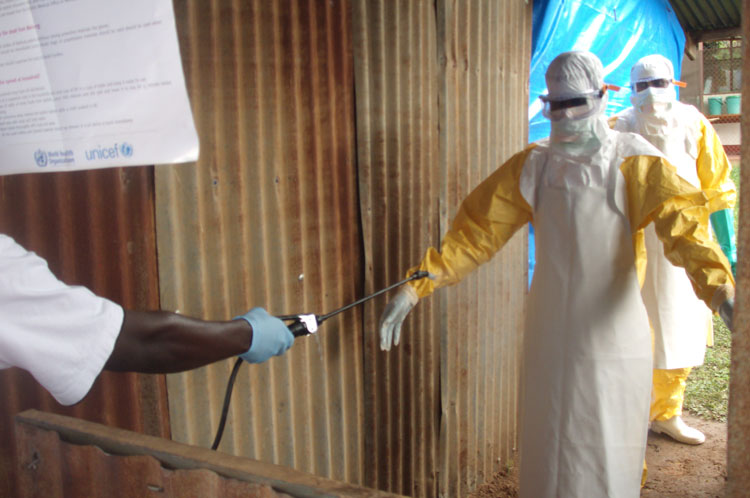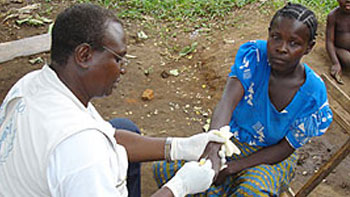 Photo: Raquel Reyes
Photo: Raquel Reyes
Viral haemorrhagic fevers include a spectrum of relatively mild to severe life-threatening diseases characterized by sudden onset of muscle and joint pain, fever, bleeding and shock from loss of blood. In severe cases, one of the most prominent symptoms is bleeding, or haemorrhaging, from orifices and internal organs.
In the Eastern Mediterranean Region, the main viral haemorrhagic fevers are yellow fever, Rift Valley fever, dengue fever, Crimean–Congo haemorrhagic fever and Ebola virus disease.
There are multiple modes of transmission for viral haemorrhagic fever:
person to person through direct contact with symptomatic patients, body fluids, or cadavers
inadequate infection control in a hospital setting (Crimean–Congo haemorrhagic fever, Lassa, Ebola)
slaughtering practices
consumption of raw meat from infected animals or unpasteurized milk (Crimean–Congo haemorrhagic fever, Rift Valley fever)
direct contact with rodents, or inhalation of or contact with materials contaminated with rodent excreta (Lassa)
mosquito bites (Rift Valley fever, Dengue) or ticks (Crimean–Congo haemorrhagic fever).
The emergence and re-emergence of viral haemorrhagic fevers is a growing concern worldwide. In the past 2 decades, the Eastern Mediterranean Region has witnessed major outbreaks as well as sporadic cases of yellow fever, Rift valley fever, severe dengue and Crimean-Congo haemorrhagic fever in over 12 countries.
Viral haemorrhagic fevers are associated with occurrence of major epidemics with high case-fatality rates owing to the fact that there are no specific medical countermeasures such as vaccines or antivirals, the exception being yellow fever. Lack of timely laboratory diagnosis, late detection, inadequate infection control practices at health care facilities, and weak vector control programmes could also prolong outbreaks of haemorrhagic fevers.
Information resources

Related links
 Source: Southern African Centre for Infectious Disease Surveillance
Source: Southern African Centre for Infectious Disease Surveillance


